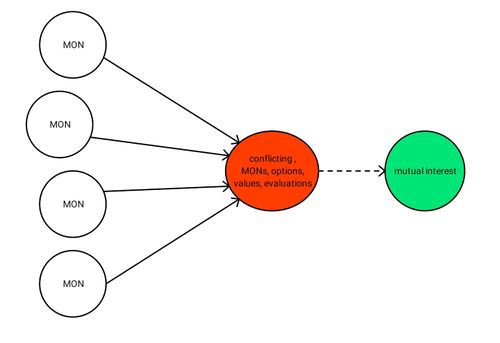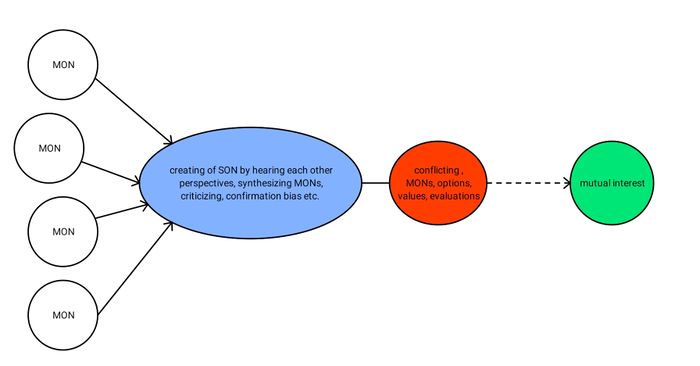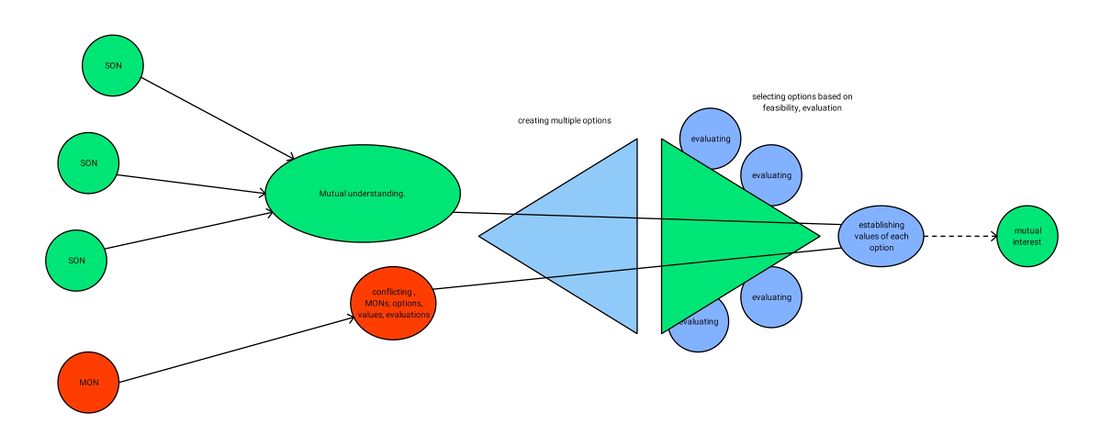The general processes of deliberation try to describe the process that all deliberations go through.
Contents
Mutual Intrests
All deliberation starts with people with mutual interests. At the beginning of the deliberation, it is likely the members will have more MONs than SON.

Conflicts
When the members will try to decide upon a preferable solution to their mutual interest, they will probably have conflicting views, understandings, solutions, etc.

Creating SON
The conflicts in deliberation should initiate a process of learning. The process will include hearing different world-views, understanding, and solutions. The main ais is to creating better mutual understanding and increasing the SON. This process may engage listening, clarification, criticizing, synthesizing, and the ability to be able to view the issues through different world views.
It is perfectly all right not to be able to create unanimous SON. Although it is preferable to create a son, for mutual understanding, it is natural, that not all members will agree upon the issues that are discussed.
Creating and evaluating options
The next element in deliberative decision making is creating alternative options to solve the common challenge. There are many methods to create a diversity of options. and in different situations the amount of diversity may alter, for instance in fast decisions, we might have a small number of options, while in a large-scale decision that includes many members there might be more options.
After creating a large number of options, the options should be validated and tagged for the number of resources needed and the ability to harness such resources. Also, there should be an estimation of what benefits each option should give, and what are the chances of it to materialize.
Selecting
From the different options, members can select a preferable option

